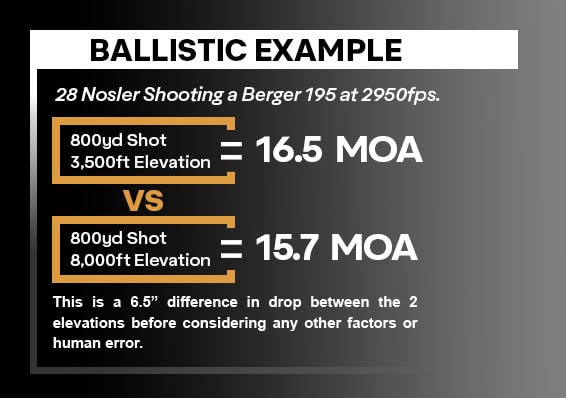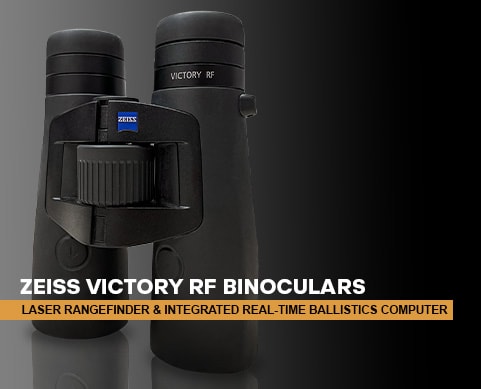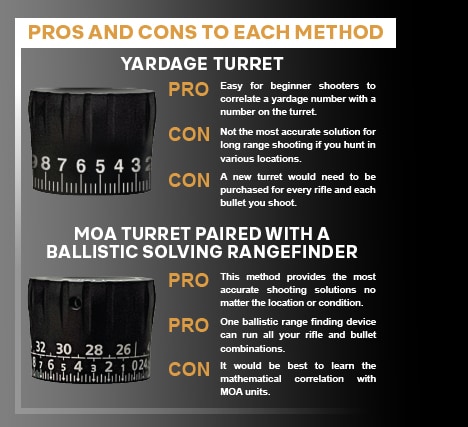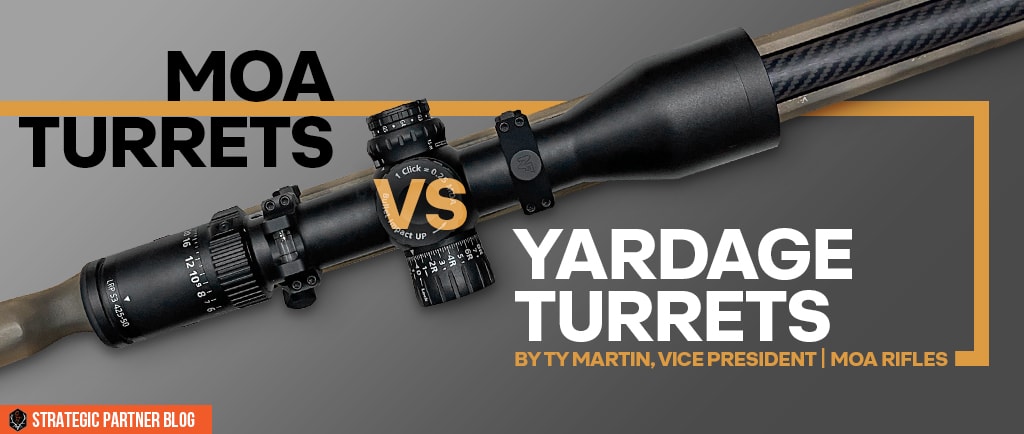When purchasing or building a custom long range hunting rifle, do you prefer to keep the turret in standard MOA (Minute of Angle) units or do you prefer a yardage turret? This is a very common question between rifle enthusiasts and builders throughout the industry. Let’s dive into the pros and cons of each decision and why one method is more accurate than the other!
What is a yardage turret?
A yardage turret is a custom laser engraved turret that is made after the ballistic data has been calculated for that specific rifle. It’s called a yardage turret because it converts standard MOA units into a number that reflects the distance you are shooting. For example, if you range a deer at 600 yards, you could then turn your turret to 6 and shoot. This is a very common method people use when shooting long range. It sounds very simple, but what are the cons?
When making a yardage turret, the ballistic data must to be known before the turret is laser engraved. To laser engrave the turret accurately, you’ll need to know velocity of the bullet you’re shooting, average elevation and temperature you are hunting in, scope height, bullet weight, and bullet BC. Once the turret is cut, that turret is only accurate if you are shooting the specific bullet it was cut for and in those relative conditions it was cut for.
For example, if you’re an avid hunter and you cut the turret for 3500ft elevation, but then decide to go on a Wyoming high country mule deer hunt at 8,000ft, that turret is no longer precisely accurate. Why? Because at higher elevations, the air is thinner and your bullet will actually fly more efficiently due to less resistance, resulting in less drop at distance.
Keeping your turret in MOA and pairing it with a ballistic solver.
The other method to long range shooting rather than a yardage turret, is keeping your turret in MOA and pairing it with a ballistic solving range finder that gives you your ballistic solution. For example, if you’re running a ballistic solving rangefinder like the Zeiss Victory RF Binoculars or the Sig Kilo 8K rangefinder, you will simply input your ballistic profile and it will give you the MOA to dial your turret based on the range you are shooting. To give an example, if you range a deer at 600 yards, it might give you a number around 7.5 MOA to dial to. You would simply turn to 7.5 on your turret and shoot. What are the pros and cons to this method?
The pros to this method are that no matter what environment you are in, a ballistic solving rangefinder like the two listed will automatically compensate for your air density (affected by temperature and elevation) before giving you the solution. These rangefinders also compensate for shot angle, and all other atmospheric conditions. This is by far the most precise way to accurately shoot long range no matter what environmental condition or location you are in. Another benefit to this method is that you can utilize the ballistic solving rangefinder for multiple ballistic profiles, giving you the ability to run various bullet combinations and several rifles from one device. If you are wanting to run a yardage turret, you would need a different turret for every rifle and you would need to buy a new turret if you were to ever change bullets. The only con to running an MOA turret is that it would be best to learn MOA and the mathematical adjustments that go along with it. 
Conclusion
These two methods of long-range shooting both work well, and you will find success with either method. To clarify, the best setup depends on the individual’s hunting scenario. For example, maybe you don’t shoot over 500 yards and you hunt the same ranch every year. In this scenario, the yardage turret would get you by just fine and you will have very accurate results. If you are a hunter who travels the country and hunts in a variety of locations, keeping an MOA turret paired with a ballistic solving range finder would be the preferred method of choice, especially if you are wanting to get efficient with shooting past 500 yards. Overall, the yardage turret method works and it’s a method people have been using for years, but keeping your turret in MOA and investing in a ballistic solving rangefinder to give you dial-to solutions is the most accurate method.
Ty Martin is Vice President of MOA Rifles and operates the Extreme Shooting School. He can be reached at ty@moarifles.com, or by phone: 541-526-1820.
https://moarifles.com | https://moarifles.com/long-range-shooting-school




